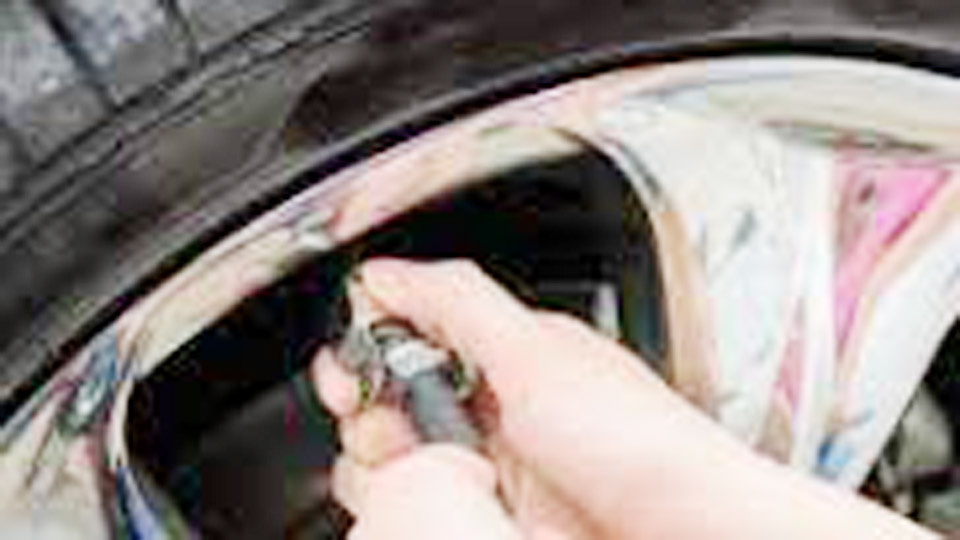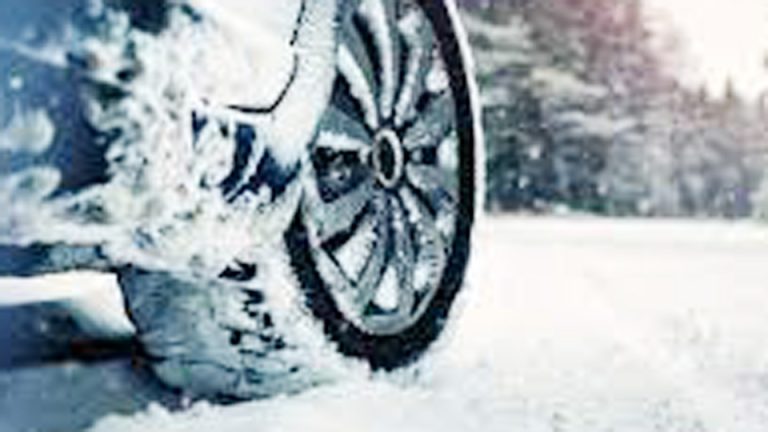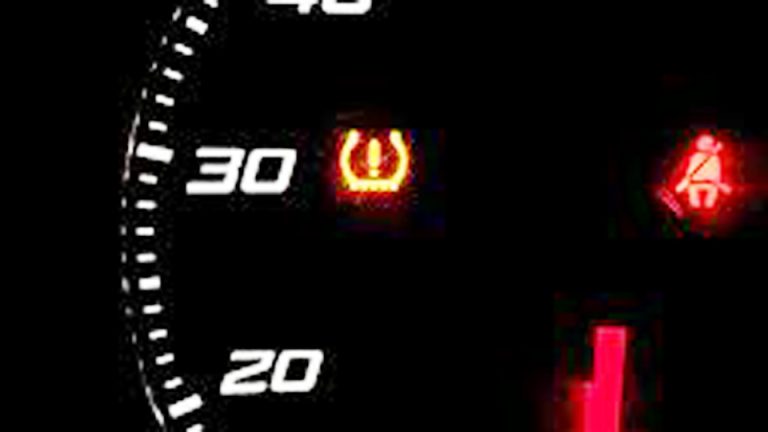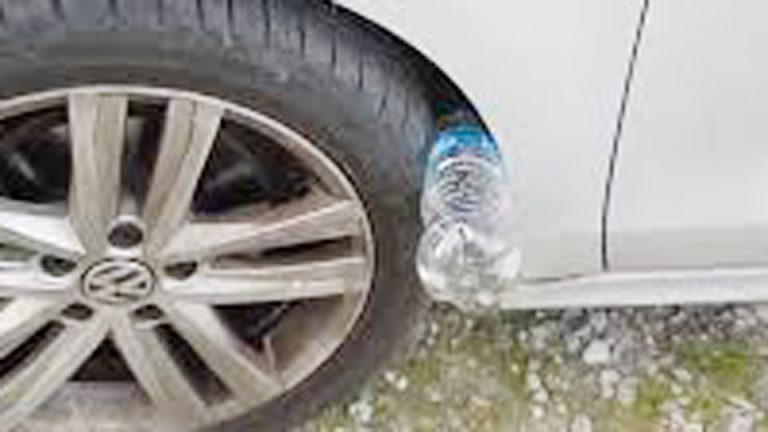I used to be one of those drivers who filled up my tires with regular air and didn’t think twice about it—until I started noticing how often I was topping off the pressure, especially during seasonal temperature changes. A friend at the shop suggested trying nitrogen, and I’ll be honest, I was skeptical.
But after switching to nitrogen in my tires and running it for several months, I noticed a difference almost immediately—more consistent pressure, better fuel efficiency, and even a smoother ride. From my own experience, using nitrogen in tires isn’t just some high-end gimmick—it actually offers real, everyday benefits that can extend tire life and improve driving performance.
If you’re driving long highway miles or just want to spend less time checking your tire pressure, nitrogen might be worth considering. I’ll break down the key benefits I’ve personally seen and why more drivers are making the switch.

Image by gonitrotire
Why Nitrogen Instead of Air?
Before diving into the benefits, let’s talk about what nitrogen tire inflation is. Regular air is about 78% nitrogen, 21% oxygen, and a mix of other gases with a bit of water vapor. Nitrogen tire inflation uses nearly pure nitrogen—around 93-99%—pumped into your tires with a special machine.
The idea is that nitrogen’s properties, like being drier and leaking slower, give it an edge over air. I first tried nitrogen on my Mazda 3 when a shop threw it in with new tires, and it got me curious about how it compared to the air-filled tires on my Ranger. Understanding this sets up why nitrogen’s worth considering.
Science Behind Nitrogen’s Benefits
What makes nitrogen special? It’s all about chemistry and physics. Nitrogen molecules are a tad larger than oxygen molecules, so they escape through tire rubber more slowly.
Plus, nitrogen is dry, meaning no water vapor to mess with pressure or corrode wheels. Air’s moisture and oxygen can cause pressure swings and rust, especially in harsh weather.
I noticed this with my Silverado—air-filled tires lost pressure faster in cold winters than my nitrogen-filled Mazda’s tires. This science is the backbone of nitrogen’s advantages, so let’s dig into what those are.
Key Benefits of Using Nitrogen in Tires
After using nitrogen in my cars and helping buddies with theirs, I’ve seen some solid perks. Here’s what I’ve learned about the benefit of using nitrogen in tires:
Steady Tire Pressure
The top advantage is consistent pressure. Nitrogen leaks slower than air because of its larger molecules and lack of moisture. I check my Mazda’s nitrogen-filled tires every month, and they rarely drop more than a psi, even in chilly weather.
My air-filled Ranger, though, could lose 4-5 psi in a cold snap, needing constant top-offs. Steady pressure means better handling, safer driving, and less time fussing with a tire gauge.
Boosted Fuel Efficiency
Underinflated tires make your engine work harder, burning more gas. Nitrogen’s stable pressure keeps tires at the right psi, improving mileage. I saw this with my Silverado—after switching to nitrogen, I picked up about 1-2 mpg on long drives.
My friend’s Outback got a similar boost with nitrogen. It’s not a huge jump, but when gas prices are high, those savings add up over months of driving.
Extended Tire Life
Proper pressure prevents uneven tire wear, so your tires last longer. Nitrogen’s consistency helps keep that ideal pressure. My buddy’s Nissan Altima had nitrogen-filled tires, and they lasted about 6,000 miles longer than his old air-filled set.
My Mazda’s tires are pushing 52,000 miles with even tread, thanks to nitrogen. Fewer tire replacements mean more money for other car mods or a nice road trip.
Less Wheel Corrosion
Moisture in regular air can rust alloy wheels, especially in wet or salty conditions like snowy roads. Nitrogen’s dry nature cuts down on corrosion. I noticed this with my Ranger in winter—its air-filled wheels started showing rust inside, while my nitrogen-filled Mazda’s wheels stayed clean as a whistle. This is a big deal if you want your wheels to look sharp and last.
Better Handling in Extreme Weather
Nitrogen isn’t as affected by temperature swings as air. Regular air expands in heat and contracts in cold, causing pressure changes. Nitrogen stays more stable, which is great for consistent performance.
I took my Outback on a hot summer camping trip, and its nitrogen-filled tires held steady, while my air-filled Ranger’s tires needed tweaking in the same heat. Nitrogen’s a lifesaver in extreme climates.
Improved Safety
Consistent pressure means better traction, braking, and handling, making your car safer. Underinflated tires can feel wobbly or skid in rain or snow. I felt more confident hauling a trailer with my Silverado after switching to nitrogen—the tires stayed at the right pressure, giving me solid control. Safety’s a huge reason I recommend nitrogen for heavy-duty driving or long commutes.
How Nitrogen Gets Into Your Tires
Curious about the process? Shops use a nitrogen generator to purge air from your tires and fill them with pure nitrogen. I watched this when I got new tires for my Mazda—the tech hooked up a machine that cycled nitrogen through the tires to remove oxygen and moisture.
It takes about 5 minutes per tire. Some shops charge $5-$10 per tire, but others include it free with new tires. I’ve seen green valve caps on nitrogen-filled tires, like on my Silverado, which helps identify them.
My Real-World Experience with Nitrogen
Let me share a couple of stories to show how nitrogen worked for me. When I got new tires for my Mazda 3, the shop offered nitrogen for $6 per tire. I was skeptical but gave it a try.
Over the next year, I checked the tire pressure monthly, and it stayed rock-solid—maybe a 1-psi drop in winter, compared to 5 psi with my air-filled Ranger. My Mazda’s fuel economy bumped up slightly, and the tires wore evenly, hitting 52,000 miles without a hitch.
On my Chevy Silverado, I haul a trailer for work, and tire pressure is critical for safety. After switching to nitrogen, the tires held steady at 40 psi, even on long, hot trips.
My air-filled Ranger, used for off-roading, lost pressure faster in the heat, making it less reliable. Nitrogen made towing smoother and maintenance easier, though I still had to plan for shop visits to top off.
Cost of Using Nitrogen in Tires
Is nitrogen worth the cost? Here’s what I’ve seen:
| Item | Estimated Cost | Notes |
|---|---|---|
| Nitrogen Fill (per tire) | $5-$20 | Often free with new tires |
| Nitrogen Refill | $3-$10 per tire | For topping off pressure |
| Nitrogen Tank (DIY) | $200-$500 | For enthusiasts |
| Regular Air | Free-$2 | Gas station pumps |
| Professional Tire Service | $50-$150 | Includes nitrogen, alignment |
I paid $24 to fill my Mazda’s tires with nitrogen, and it saved me time and gas over a year. For my budget-conscious Ranger, I stuck with air to keep costs low.
Who Benefits Most from Nitrogen?
Nitrogen isn’t for everyone, but here’s who I think gets the most out of it:
- Long-Distance Drivers: If you rack up miles, like I do with my Silverado, nitrogen cuts down on pressure checks.
- Towing or Hauling: Stable pressure is key for heavy loads. My trailer trips were smoother with nitrogen.
- Extreme Weather: Hot summers or cold winters cause pressure swings with air. Nitrogen helped my Outback in heat.
- Performance Cars: Enthusiasts with cars like my friend’s Mustang love nitrogen for precise handling.
- Luxury Vehicles: Nitrogen keeps high-end wheels corrosion-free. My buddy’s Lexus wheels stayed pristine.
If you’re a casual driver with an older car, like my Ranger, regular air might be enough.
Nitrogen vs Air: A Quick Comparison
To help you decide, here’s a table comparing nitrogen to air based on my experience:
| Feature | Nitrogen | Regular Air |
|---|---|---|
| Pressure Stability | High (leaks slower) | Moderate (leaks faster) |
| Moisture Content | Dry (no water vapor) | Contains moisture |
| Wheel Corrosion | Minimal | Can cause rust |
| Fuel Economy | Slightly better | Standard |
| Tire Life | Longer (even wear) | Shorter if pressure varies |
| Cost | $5-$20 per tire | Free or $1-$2 |
Nitrogen’s great for my Mazda and Silverado, but air works fine for my Ranger’s short trips.
Maintaining Nitrogen-Filled Tires
Using nitrogen doesn’t mean you skip tire care. Here’s how I keep my nitrogen-filled tires in shape:
Check Pressure Monthly: I use a digital gauge on my Mazda to check every 4-6 weeks. Nitrogen leaks slower, but it’s not leak-proof.
Top Off with Nitrogen: If pressure’s low, I go to a shop with a nitrogen generator to keep it pure. I learned this after topping off my Silverado with air by mistake—it diluted the benefits.
Inspect for Damage: Nitrogen won’t fix punctures. My Ranger had a nail that needed patching, nitrogen or not.
Rotate Tires: I rotate every 5,000-8,000 miles for even wear, whether it’s nitrogen or air.
Common Myths About Nitrogen in Tires
I’ve heard some tall tales about nitrogen, so let’s set them straight:
Myth: Nitrogen Never Leaks: It leaks slower, but you still need to check pressure. My Mazda’s tires lose a bit over time.
Myth: Nitrogen Boosts Horsepower: It helps with pressure stability, not performance. My friend’s Mustang didn’t get faster with nitrogen.
Myth: You Can’t Mix Nitrogen with Air: You can, but it reduces benefits. I mixed air in my Silverado once and noticed more pressure loss.
Myth: Nitrogen’s Only for Fancy Cars: It’s great for any vehicle, like my Silverado for towing or my Mazda for commuting.
When to Stick with Regular Air
Nitrogen’s not a must for everyone. Here’s when I stick with air:
- Tight Budget: Air’s free or cheap. I use it in my Ranger to save cash.
- Short Drives: If you don’t drive much, like my neighbor’s Outback, air’s fine.
- No Nitrogen Access: Some areas lack nitrogen fill stations. My rural friend uses air for his Chevy.
- Older Cars: Worn tires or wheels, like my Ranger’s, don’t benefit as much from nitrogen.
Getting Nitrogen in Your Tires
Ready to try nitrogen? Here’s how I do it:
Find a Shop: Most tire shops or dealerships offer nitrogen, often free with new tires. I got it for my Mazda at a local shop.
Ask About Purity: Ensure they use 93-99% pure nitrogen for maximum benefits. My Silverado’s shop confirmed 95% purity.
Look for Green Valve Caps: They show nitrogen-filled tires. My Mazda’s tires have them, making it easy to spot.
Maintain with Nitrogen: Top off at a shop with nitrogen to keep the system pure. I do this every few months for my Mazda.
Nitrogen in Different Vehicles
Nitrogen’s benefits vary by vehicle. Here’s what I’ve seen:
| Vehicle | Nitrogen Benefits | Notes |
|---|---|---|
| Mazda 3 (2014) | Better mileage, stable pressure | Great for daily commuting |
| Chevy Silverado (2016) | Steady pressure for towing | Ideal for heavy loads |
| Ford Ranger (2008) | Minimal corrosion | Air works for light use |
| Subaru Outback (2015) | Consistent in heat | Good for camping trips |
My Mazda and Silverado saw the biggest gains, while my Ranger was fine with air.
What Not to Do with Nitrogen-Filled Tires
I’ve made mistakes with nitrogen. Here’s what to avoid:
- Don’t Top Off with Air Freely: It dilutes nitrogen’s benefits. I did this on my Silverado and saw more pressure loss.
- Don’t Skip Pressure Checks: Nitrogen leaks slower, but tires still lose pressure. I check my Mazda monthly.
- Don’t Assume It Fixes Leaks: Nitrogen won’t seal a puncture. My Ranger needed a patch despite nitrogen.
- Don’t Overpay: Some shops charge too much. I shopped around for my Mazda to get a fair price.
Practical Tips for Using Nitrogen in Tires
Here are some tips to get the most out of nitrogen:
- Shop Around for Deals: Some shops include nitrogen free with tires. I got a deal for my Mazda.
- Use a Quality Gauge: A digital gauge ensures accurate pressure checks. I use one for all my cars.
- Keep Green Caps: They remind techs your tires are nitrogen-filled.
- Combine with Maintenance: Check pressure when rotating tires or changing oil.
These tricks have made nitrogen a breeze for my vehicles.
Wrapping It Up
So, what is the benefit of using nitrogen in tires? From my time with my Mazda, Silverado, and more, nitrogen offers stable pressure, better fuel economy, longer tire life, reduced corrosion, and improved safety—perfect for long drives, towing, or extreme weather.
It’s not for everyone, but if you want less hassle and better tire performance, it’s a solid choice. For budget rides like my Ranger, air works fine with a bit more upkeep.
Try nitrogen if it fits your driving style, and keep up with regular tire checks. Here’s to smoother rides, safer roads, and tires that last!
Frequently Asked Questions
What is the benefit of using nitrogen in tires?
Nitrogen keeps tire pressure stable, boosts fuel economy, extends tire life, reduces wheel corrosion, and improves safety, especially in extreme weather.
Is nitrogen better than regular air for tires?
Nitrogen’s great for frequent drivers or towing, like my Silverado, but air’s fine for budget cars like my Ranger. It depends on your driving habits.
How much does it cost to fill tires with nitrogen?
Typically $5-$20 per tire, sometimes free with new tires. Refills cost $3-$10. I paid $24 for my Mazda’s four tires.
Can I mix nitrogen with regular air in my tires?
You can, but it reduces nitrogen’s benefits by adding moisture and oxygen. I mixed air in my Silverado once, and pressure loss increased.
How often should I check nitrogen-filled tire pressure?
Check monthly, though nitrogen leaks slower than air. I check my Mazda’s tires every 4-6 weeks to stay safe.




